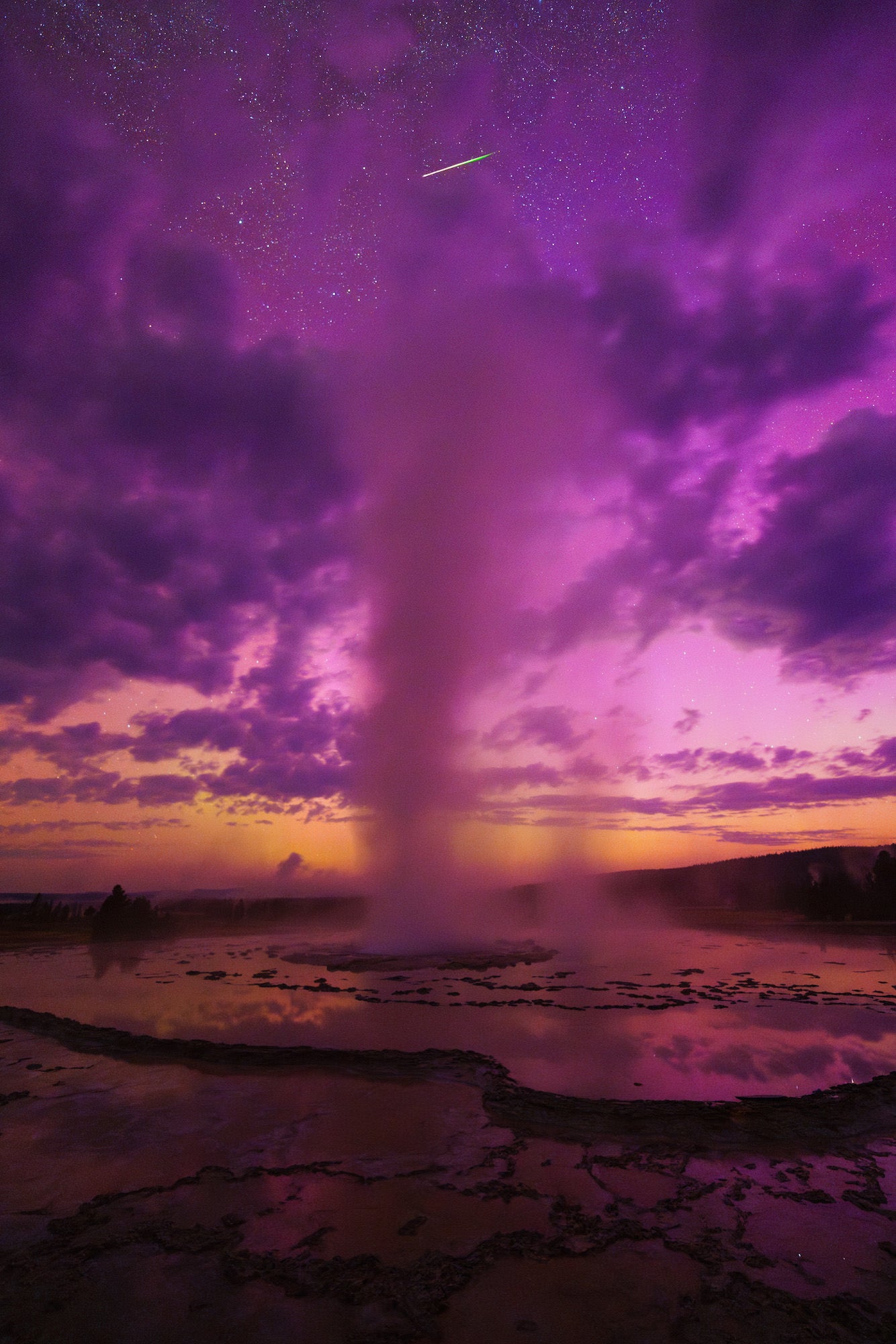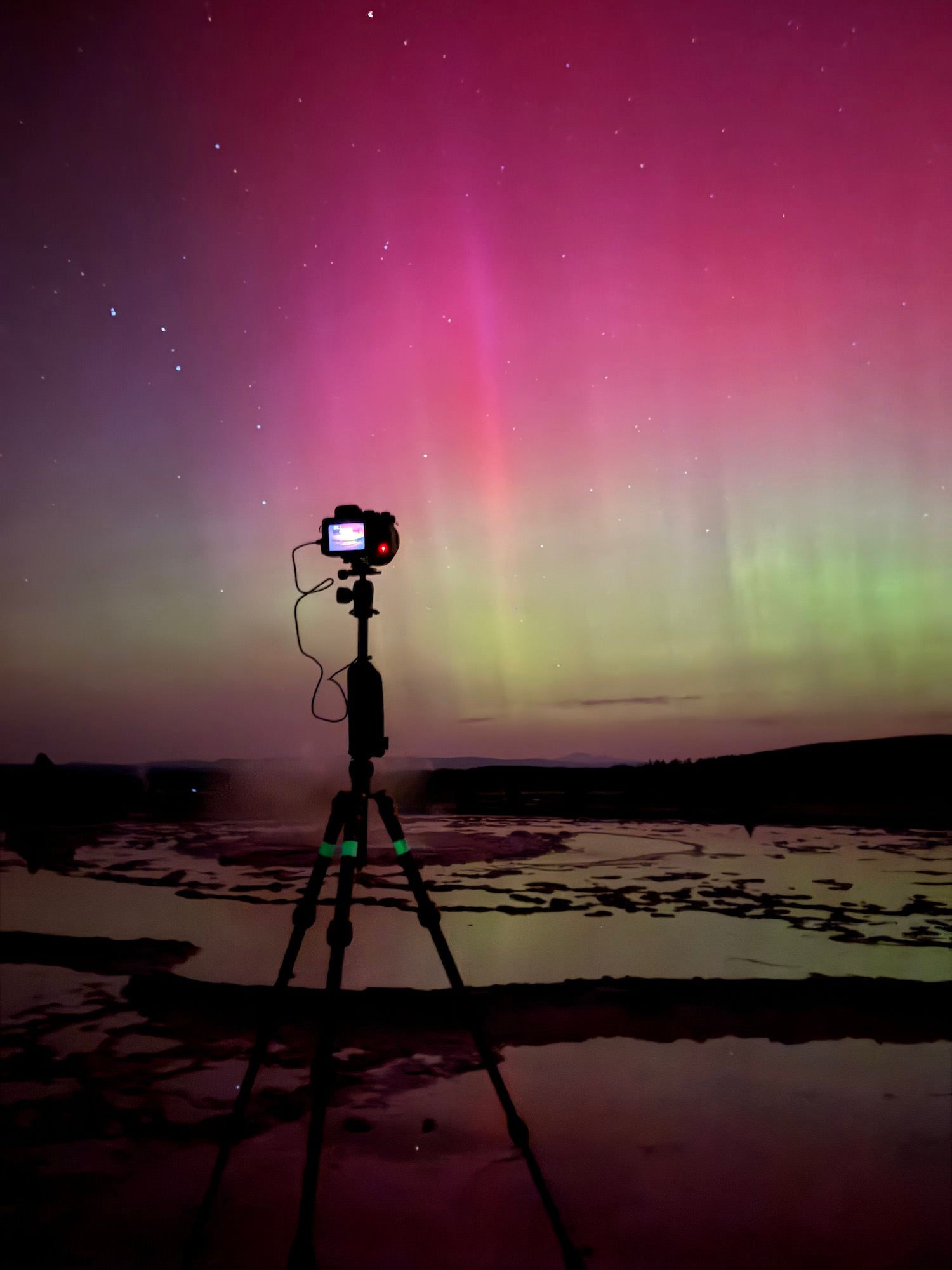Evan Lobeto (@evan_lobeto) is a photographer whose passion for landscapes and night skies really took off once he moved to Colorado. “I've always been interested in space,” he says, “and several years ago I was out near Zion National Park with a photographer friend who was trying to photograph the Milky Way for the first time. Seeing the first few shots on the back of his camera with the stars glittering across the screen was all I needed to dive headfirst into astrophotography. Since then I've traveled around Colorado and the Southwest searching for unique foregrounds to showcase the night sky and other celestial events. This year's Perseid meteor shower was no different.” We came across this colorful astro image Lobeto took during the meteor shower and had to connect with him to learn more about it. Keep reading as he shares the story behind the shot in his own words.
Product Preview – In This Article You’ll Find:
–Sony Alpha 7R III
–Sony 14mm f/1.8 G Master

Photo by Evan Lobeto. Sony Alpha 7R III. Sony 14mm f/1.8 G Master. 6-sec., f/1.8, ISO 2000
Scouting Weather & Scenery
I spent the week leading up to it scouring weather forecasts and scrolling around Google Earth looking for a location with clear skies and an interesting foreground. Unfortunately, most places within a 10-hour drive from my home were either covered in smoke from wildfires or forecasted to be raining or cloudy. I knew a group of friends would be up at Yellowstone that weekend which was just within the window I was willing to travel. I figured that if the forecast ended up poor, I'd at least have some company. The first two days were poor indeed with rain starting Friday night and continuing on through early Sunday morning. However, Sunday broke with clear skies and a promising aurora forecast to boot. One of my friends suggested the Great Fountain Geyser as a potential location to shoot the Perseids along with the Northern Lights since the viewing platform of the geyser faces north. Upon arriving at the geyser that evening, we saw that the geyser was predicted to erupt between midnight and 4:00 a.m. which was absolutely perfect!
A Meteor, A Steam Plume & An Aurora Walk Into A Frame
As soon as the sun went down and the skies darkened I was able to see a faint green glow along the horizon looking north. I knew this night was going to be incredible. I set up one camera, a Sony Alpha 7R V with a fisheye lens, to timelapse the entire night hoping to capture an epic aurora show along with the Perseids and the erupting geyser. Around 11:00 a.m. I took my second camera, a Sony Alpha 7R III paired with the Sony 14mm f/1.8 G Master lens, to capture a few foregrounds to use for my composite shot blended with all the meteors I captured that night. Once I had the foregrounds I needed, I set my Sony Alpha 7R III with the internal intervalometer running on a star tracker pointed at the radiant point of the meteor shower. The tracker allowed me to counteract the rotation of the Earth and continuously photograph the exact same spot in the sky throughout the night. This would be important later on when blending in meteors so that they'd all be in the same relative position to the sky in which they were being blended into. I then sat back to watch the northern lights shine overhead as meteors streaked by.
Around 4:00 a.m. some clouds started blowing in and I figured I wouldn't be able to catch many more meteors so I stopped the tracker and my second camera, and moved everything over to face the geyser as it was starting to burble and steam more. I set up my tripod and camera facing the geyser and took a few test shots to dial in the settings since the aurora had dimmed substantially now and was hardly visible to the naked eye. I left the aperture wide-open at f/1.8 to let in as much light as possible and keep my ISO down as much as I could, even though the Sony Alpha 7R III is absolutely incredible in low-light. I knew that I would need a portrait oriented photo in order to capture the scene as I had in my head. I was able to frame the entire geyser and surrounding tiered pools while still fitting in a large portion of the sky with the wide FOV of the 14mm lens. After a few shots I settled on a 6-sec. exposure time at ISO 2000, f/1.8, 14mm to properly expose the scene without having the shifting steam from the geyser end up too blurry.
My original goal for this photo was to catch the geyser as it erupted with the purple glow of the aurora behind it. I knew that the Perseids were still shooting across the sky but I figured my chances of catching one in frame were pretty slim. Around 4:15 a.m. the geyser was bubbling more and more with the steam plume growing taller by the minute and it seemed like it was about to blow. I started pressing the shutter button with a two-second self timer to ensure the camera was still as the exposure started hoping to catch the instant it erupted. Several shots in, there was a particularly loud gurgle and a huge amount of water slopped up over the lip of the geyser and I pressed the shutter. As the camera was taking the photo the steam plume grew even taller from the excess of superheated water spilling out. I pressed the Play button on the back of the camera to check out the photo I just captured and let out a shout when I saw that I had managed to catch one of the meteors with their signature green trails positioned center frame, right over the steam plume, and narrowly avoiding the clouds. A few moments later the geyser did end up erupting but it was far too steamy to get any worthwhile photos but that was absolutely fine with me; I had already captured the photo of the night.
A No-Brainer Setup For Astrophotography
I chose the Sony Alpha 7R III to shoot with for a few reasons, I love the 42mp sensor and how well it performs in low light. I'm able to shoot astrophotos with minimal noise at incredible resolution that lets me crop in during post if needed, or print photos at large sizes without needing to worry about pixelation. My other favorite feature of recent Sony cameras is Bright Monitoring. When this setting is toggled on, I'm able to view a brightened up live view of the scene so I can set up the shot just the way I would during the day without needing to take multiple test shots to ensure proper framing. As an astrophotographer the Sony 14mm f/1.8 G Master is a no-brainer. It allows me to capture the wide expanses of the night sky and it lets in a ton of light at f/1.8 which helps minimize noise and keep my ISO down. It's also sharp corner to corner when used wide open so I don't need to worry about stopping down to keep the stars in the corners of the photo shaped nicely.
BTS photo of Lobeto's setup
The Edit
Once I got back home the post-processing step was pretty straightforward. I knew it would be the first photo I worked on and since the settings were already dialed in in the field, there wasn't much to do. I loaded it into Adobe CameraRAW and first ran it through the AI Denoise just to clean it up a bit. Once that was complete I made a few white balance adjustments to counteract the hydrogen-alpha mod I have on my camera (RAW files are incredibly warm and magenta tinted so I typically bring the white balance down to 2250 and -62 as a general starting point for night sky photos) and added a small curves adjustment to add a bit of contrast.
See more of Evan Lobeto’s work on Instagram @evan_lobeto.




